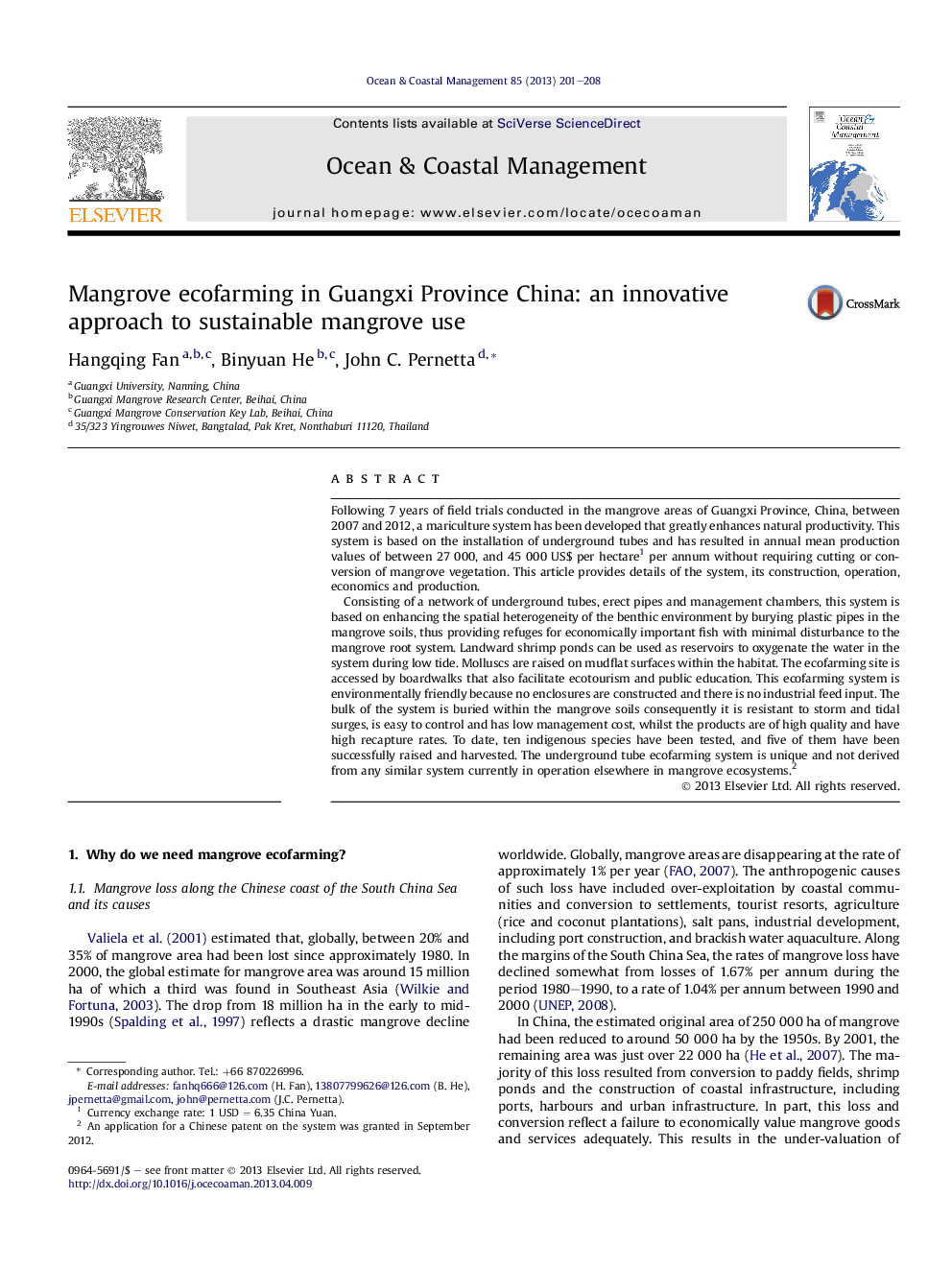| Article ID | Journal | Published Year | Pages | File Type |
|---|---|---|---|---|
| 1723789 | Ocean & Coastal Management | 2013 | 8 Pages |
Abstract
Consisting of a network of underground tubes, erect pipes and management chambers, this system is based on enhancing the spatial heterogeneity of the benthic environment by burying plastic pipes in the mangrove soils, thus providing refuges for economically important fish with minimal disturbance to the mangrove root system. Landward shrimp ponds can be used as reservoirs to oxygenate the water in the system during low tide. Molluscs are raised on mudflat surfaces within the habitat. The ecofarming site is accessed by boardwalks that also facilitate ecotourism and public education. This ecofarming system is environmentally friendly because no enclosures are constructed and there is no industrial feed input. The bulk of the system is buried within the mangrove soils consequently it is resistant to storm and tidal surges, is easy to control and has low management cost, whilst the products are of high quality and have high recapture rates. To date, ten indigenous species have been tested, and five of them have been successfully raised and harvested. The underground tube ecofarming system is unique and not derived from any similar system currently in operation elsewhere in mangrove ecosystems.2
Related Topics
Physical Sciences and Engineering
Earth and Planetary Sciences
Oceanography
Authors
Hangqing Fan, Binyuan He, John C. Pernetta,
